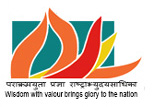In 2024, India witnessed a significant milestone in its water conservation efforts. The total annual groundwater recharge saw an increase of 15 Billion Cubic Meters (BCM), while extraction decreased by 3 BCM compared to the 2017 assessment.
Water, the lifeblood of our planet, follows an extraordinary journey from the clouds to the earth, filtering through rocks and sand to become the essential resource we rely on: clean groundwater. This invaluable resource sustains life, powers agricultural productivity, and provides water security for millions of people. The Narendra Modi-led government has made tremendous strides in preserving and rejuvenating groundwater resources across India, reflecting a deep commitment to environmental sustainability and future-proofing water resources for generations to come.
Remarkable Growth in Groundwater Recharge
In 2024, India witnessed a significant milestone in its water conservation efforts. The total annual groundwater recharge saw an increase of 15 Billion Cubic Meters (BCM), while extraction decreased by 3 BCM compared to the 2017 assessment. This positive shift is indicative of the sustained efforts to restore and manage the country’s groundwater resources, emphasizing the effectiveness of the government’s ongoing initiatives.
The latest report from the Central Ground Water Board (CGWB) in collaboration with state departments reveals that India’s total annual groundwater recharge stands at 446.90 BCM, with an extractable resource of 406.19 BCM. Annual extraction has been assessed at 245.64 BCM, indicating a steady improvement in the state of groundwater resources. Groundwater recharge has been bolstered, particularly through the restoration of water bodies, tanks, and other conservation structures, leading to better conditions in 128 groundwater units across India.
Groundwater Conservation and Safe Usage
One of the most promising outcomes of this renewed focus on groundwater management is the marked improvement in the safety of the groundwater units. The percentage of assessment units falling under the safe category has risen from 62.6% in 2017 to an impressive 73.4% in 2024. In contrast, the percentage of over-exploited units has reduced from 17.24% to 11.13%. This shift showcases the government’s success in implementing strategies that ensure more regions benefit from a stable and reliable groundwater supply.
Groundwater quality also plays a crucial role in maintaining the health of the nation. The Government of India’s comprehensive monitoring and management systems focus on preventing contamination and ensuring the water’s usability. As per the 2024 Annual Groundwater Quality Report, a significant 81% of groundwater samples are now suitable for irrigation, with 100% of groundwater samples from the North-Eastern states deemed “excellent” for agricultural use.
Government Initiatives Leading the Change
India’s success in rejuvenating its groundwater resources is a direct result of the Modi government’s multi-faceted approach to water conservation. The government has launched numerous programs that collectively address the various dimensions of groundwater management. Notable among them are:
- Jal Shakti Abhiyan (JSA)
Launched in 2019, the Jal Shakti Abhiyan is a nationwide campaign focused on water conservation and rainwater harvesting. The program promotes efficient water resource management across rural and urban areas through community participation and convergence of various schemes. The 5th phase, “Catch the Rain” (2024), emphasizes maximizing rainwater conservation before the monsoon. The campaign involves constructing check dams, rooftop rainwater harvesting, rejuvenation of water bodies, and afforestation to enhance water availability.
- Atal Bhujal Yojana (ABY)
Introduced in 2020, the Atal Bhujal Yojana (Atal Jal) is a central sector scheme aimed at sustainable groundwater management in water-stressed regions. Covering 80 districts across seven states, this initiative promotes a community-driven, participatory approach to ensure equitable distribution of groundwater. It encourages scientific water budgeting, demand-side management, and aquifer recharge, ensuring long-term water security for gram panchayats facing severe water scarcity.
- MGNREGS for Water Security
The MGNREGS, originally designed for employment generation in rural areas, has integrated water conservation and harvesting projects to improve rural water security. Through activities such as pond construction, desilting of water bodies, check dams, farm ponds, and watershed development, MGNREGS plays a crucial role in enhancing water availability for agriculture, drinking water, and groundwater recharge. This convergence ensures a sustainable livelihood for rural communities while addressing climate resilience and drought mitigation.
- National Aquifer Mapping (NAQUIM)
The National Aquifer Mapping and Management Program (NAQUIM), spearheaded by the Central Ground Water Board (CGWB), is a critical initiative for scientific groundwater management. Covering over 25 lakh square kilometers, NAQUIM provides detailed hydrogeological data to assess aquifer conditions, recharge potential, and sustainable extraction limits. This mapping helps in formulating groundwater recharge strategies, conservation plans, and policy frameworks to ensure long-term water security.
- Mission Amrit Sarovar (2022)
Launched in 2022, Mission Amrit Sarovar aims to create or rejuvenate 75 water bodies (Amrit Sarovars) in each district, aligning with the vision of Azadi Ka Amrit Mahotsav. These ponds and reservoirs enhance rainwater harvesting, groundwater recharge, and ecosystem restoration at the grassroots level. The initiative brings together multiple stakeholders, including Panchayati Raj institutions, urban local bodies, and government agencies, to promote community-driven water conservation.
- Pradhan Mantri Krishi Sinchai Yojana (PMKSY)
The Pradhan Mantri Krishi Sinchai Yojana (PMKSY) is a flagship irrigation program aimed at enhancing irrigation coverage and improving water-use efficiency in agriculture. Key components include:
- Har Khet Ko Pani – Expanding irrigation infrastructure to bring more farmland under assured irrigation.
- Watershed Development – Managing water runoff and promoting rain-fed agriculture.
- Repair, Renovation & Restoration (RRR) of Water Bodies – Strengthening traditional water bodies to enhance water availability.
- Per Drop More Crop – Encouraging micro-irrigation techniques like drip and sprinkler irrigation to maximize water efficiency.
By integrating surface and groundwater management, PMKSY ensures sustainable agricultural productivity and climate resilience.
- 15th Finance Commission Grants & Water Conservation
The 15th Finance Commission has allocated significant grants to rural and urban local bodies to support rainwater harvesting, groundwater recharge, and water conservation. These funds empower states to:
- Construct rainwater harvesting structures in both urban and rural areas.
- Strengthen wastewater management and reuse strategies.
- Restore and conserve traditional water bodies.
- Implement climate-resilient water management practices.
These financial provisions complement national water conservation efforts, reinforcing sustainable groundwater resource management across India. These initiatives, among others, have laid the foundation for sustainable groundwater management in India, illustrating the government’s dedication to securing the nation’s water resources.
The Road Ahead
While substantial progress has been made, the journey towards water sustainability requires continuous effort. The Modi government’s vision of a water-rich India is not only about increasing groundwater recharge but also ensuring its equitable distribution and high quality. The implementation of innovative technologies, along with local community involvement, will be crucial in achieving long-term success.
The ongoing work of the CGWB, coupled with the government’s collaborative efforts with states, civil society, and local authorities, will ensure that the future generations of India continue to benefit from clean and accessible groundwater.
As India continues its journey towards becoming a developed nation, the importance of securing vital resources like groundwater cannot be overstated. The vision set forth by the Modi government demonstrates an unwavering commitment to sustainability and to safeguarding the environment for future generations. These initiatives and their positive outcomes are a testament to the government’s relentless pursuit of a water-secure, developed India.
The success in groundwater recharge and conservation not only addresses India’s current needs but also establishes a model for future water management, paving the way for a greener and more prosperous India in the years to come.
(The views expressed are the author's own and do not necessarily reflect the position of the organisation)


